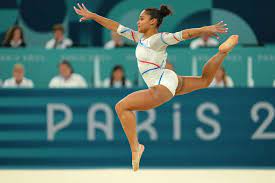Gymnastics for kids enhances learning by building physical coordination, focus, and cognitive engagement—all crucial for academic growth. From forward rolls to balance beam routines, each movement boosts brain function and encourages children to develop stronger attention spans, memory retention, and problem-solving skills. At a time when screen time is at an all-time high and attention spans are declining, gymnastics presents a fun, structured way for children to move with purpose—and learn while doing it.
How Does Movement Impact Learning in Children?
The link between physical activity and learning has been proven across multiple disciplines. When kids engage in physical activity, their brains produce chemicals like dopamine and serotonin, which are essential for mood regulation, focus, and memory.
Research shows that:
- Physical activity increases oxygen to the brain.
- Movement enhances neural connectivity and plasticity.
- Active children show improved classroom behaviour and learning outcomes.
In short, movement isn’t just about fitness—it’s fuel for the brain.
Why Is Gymnastics for Kids a Smart Choice?
Gymnastics is one of the most comprehensive movement activities a child can do. Unlike sports that emphasise competition, gymnastics focuses on individual progress, motor skills, and full-body control. That makes it ideal for developing young learners.
Here’s why gymnastics is a standout:
- It develops gross motor skills like running, jumping, and climbing.
- It improves fine motor control, especially in grip strength and balance.
- It teaches body awareness, helping kids better understand space and coordination.
- It builds discipline, as routines require memory, focus, and consistency.
These benefits transfer directly to the classroom. Children who practise gymnastics regularly often show improved handwriting, better listening skills, and increased emotional control.
What Are the Cognitive Benefits of Gymnastics?
Gymnastics routines require a surprising amount of cognitive processing. Kids need to remember sequences, respond to verbal cues, self-correct movement patterns, and stay mentally engaged through each task. These moments of micro-decision-making are exactly what build executive function skills.
Key mental skills developed through gymnastics:
- Working memory – remembering routines and instructions
- Cognitive flexibility – adjusting movements when off-balance or mid-air
- Self-regulation – focusing attention and calming nerves before a skill
- Goal-setting – striving to improve form or master a new technique
These are the same skills children rely on to complete puzzles, learn maths, or stay focused during reading time.
Does Gymnastics Help Kids Develop Confidence?
Yes—and in more ways than one.
Gymnastics gives kids measurable milestones. Whether it’s holding a handstand for three seconds or walking the balance beam unaided, each achievement builds self-efficacy. According to the principle of Consistency (Robert Cialdini), kids who achieve small wins early are more likely to persist with challenges later.
Even better, gymnastics celebrates effort as much as outcome. Children learn that progress comes from trying again, even after falling. This mindset, known as a growth mindset, helps children view challenges in school not as threats, but as opportunities to improve.
How Can Parents Support Learning Through Gymnastics?
To maximise the educational benefits of gymnastics, parents can reinforce the link between movement and learning at home:
- Ask your child to teach you a routine—they’ll practise memory and sequencing.
- Use gymnastics as a break between homework sessions to reset focus.
- Encourage consistent participation to build discipline and resilience.
Even 30–60 minutes of structured physical activity a few times a week can make a noticeable difference in behaviour, mood, and school engagement.
Are There Any Social Benefits to Gymnastics?
Absolutely. While gymnastics focuses on individual performance, most classes happen in a group setting. Children develop friendships, learn to take turns, and observe how others solve problems—skills essential to group learning environments.
Social benefits include:
- Improved cooperation and empathy
- Respect for instructors and peers
- Positive peer reinforcement when skills are shared or praised
These interactions help children transition more smoothly into classrooms and structured learning spaces.
Frequently Asked Questions
Is gymnastics safe for young children?
Yes, when taught by trained professionals in a safe environment, gymnastics is highly structured and suitable for children as young as 3. Equipment is designed for age-appropriate use, and classes usually focus on fundamentals rather than risky stunts.
How often should kids do gymnastics to see learning benefits?
Even once or twice a week can offer noticeable cognitive and behavioural improvements. The key is consistency—regular classes over time build the best results.
Does gymnastics help with conditions like ADHD or learning difficulties?
Gymnastics can benefit children with attention or sensory challenges due to its repetitive structure, clear instructions, and physical outlet. Always speak with your child’s GP or therapist before starting.
Final Thoughts: Movement Matters for Minds That Learn
In a world full of distractions, giving children the space to move, jump, and stretch their way through learning is not a luxury—it’s essential. Gymnastics for kids isn’t just about cartwheels and routines; it’s a catalyst for confidence, cognition, and classroom success.
For families looking to combine physical activity with mental growth, early learning programs that include gymnastics may be the perfect start.
To dive deeper into the science, read this CDC overview on physical activity and academic performance.

